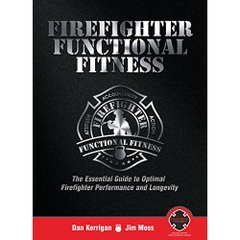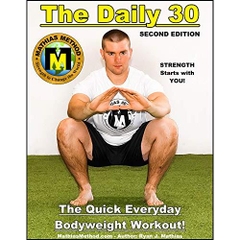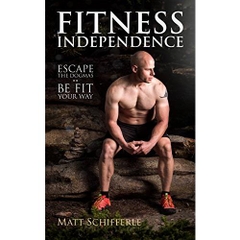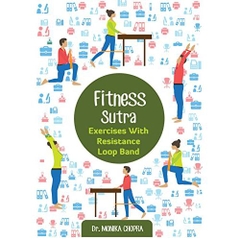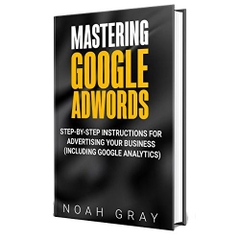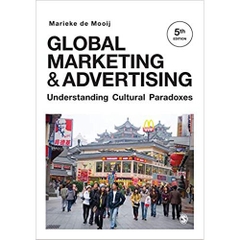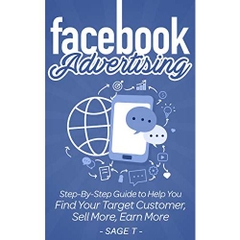-
-
-
Tổng tiền thanh toán:
-
-
Thông tin
-
Tìm sách theo yêu cầu
An epic adventure that began with one simple question: Why does my foot hurt?
Isolated by Mexico's deadly Copper Canyons, the blissful Tarahumara Indians have honed the ability to run hundreds of miles without rest or injury. In a riveting narrative, award-winning journalist and often-injured runner Christopher McDougall sets out to discover their secrets. In the process, he takes his readers from science labs at Harvard to the sun-baked valleys and freezing peaks across North America, where ever-growing numbers of ultra-runners are pushing their bodies to the limit, and, finally, to a climactic race in the Copper Canyons that pits America’s best ultra-runners against the tribe. McDougall’s incredible story will not only engage your mind but inspire your body when you realize that you, indeed all of us, were born to run.
Isolated by Mexico's deadly Copper Canyons, the blissful Tarahumara Indians have honed the ability to run hundreds of miles without rest or injury. In a riveting narrative, award-winning journalist and often-injured runner Christopher McDougall sets out to discover their secrets. In the process, he takes his readers from science labs at Harvard to the sun-baked valleys and freezing peaks across North America, where ever-growing numbers of ultra-runners are pushing their bodies to the limit, and, finally, to a climactic race in the Copper Canyons that pits America’s best ultra-runners against the tribe. McDougall’s incredible story will not only engage your mind but inspire your body when you realize that you, indeed all of us, were born to run.
Product Details
Paperback: 304 pages
- Publisher: Vintage; Reprint edition (March 29, 2011)
- Language: English
- ISBN-10: 9780307279187
- ISBN-13: 978-0307279187
- ASIN: 0307279189
- Product Dimensions: 7.9 x 5.3 x 1 inches
- Shipping Weight: 11.4 ounces (View shipping rates and policies)
- Average Customer Review: 4.7 out of 5 stars See all reviews (2,197 customer reviews)
- Amazon Best Sellers Rank: #873 in Books (See Top 100 in Books)
Editorial Reviews
Amazon.com Review
Book Description
Full of incredible characters, amazing athletic achievements, cutting-edge science, and, most of all, pure inspiration, Born to Run is an epic adventure that began with one simple question: Why does my foot hurt? In search of an answer, Christopher McDougall sets off to find a tribe of the world’s greatest distance runners and learn their secrets, and in the process shows us that everything we thought we knew about running is wrong.
Amazon Exclusive: A Q&A with Christopher McDougall
Full of incredible characters, amazing athletic achievements, cutting-edge science, and, most of all, pure inspiration, Born to Run is an epic adventure that began with one simple question: Why does my foot hurt? In search of an answer, Christopher McDougall sets off to find a tribe of the world’s greatest distance runners and learn their secrets, and in the process shows us that everything we thought we knew about running is wrong.
Isolated by the most savage terrain in North America, the reclusive Tarahumara Indians of Mexico’s deadly Copper Canyons are custodians of a lost art. For centuries they have practiced techniques that allow them to run hundreds of miles without rest and chase down anything from a deer to an Olympic marathoner while enjoying every mile of it. Their superhuman talent is matched by uncanny health and serenity, leaving the Tarahumara immune to the diseases and strife that plague modern existence. With the help of Caballo Blanco, a mysterious loner who lives among the tribe, the author was able not only to uncover the secrets of the Tarahumara but also to find his own inner ultra-athlete, as he trained for the challenge of a lifetime: a fifty-mile race through the heart of Tarahumara country pitting the tribe against an odd band of Americans, including a star ultramarathoner, a beautiful young surfer, and a barefoot wonder.
With a sharp wit and wild exuberance, McDougall takes us from the high-tech science labs at Harvard to the sun-baked valleys and freezing peaks across North America, where ever-growing numbers of ultrarunners are pushing their bodies to the limit, and, finally, to the climactic race in the Copper Canyons. Born to Run is that rare book that will not only engage your mind but inspire your body when you realize that the secret to happiness is right at your feet, and that you, indeed all of us, were born to run.
Amazon Exclusive: A Q&A with Christopher McDougall
 Question: Born to Run explores the life and running habits of the Tarahumara Indians of Mexico’s Copper Canyon, arguably the greatest distance runners in the world. What are some of the secrets you learned from them?
Question: Born to Run explores the life and running habits of the Tarahumara Indians of Mexico’s Copper Canyon, arguably the greatest distance runners in the world. What are some of the secrets you learned from them?
Christopher McDougall: The key secret hit me like a thunderbolt. It was so simple, yet such a jolt. It was this: everything I’d been taught about running was wrong. We treat running in the modern world the same way we treat childbirth—it’s going to hurt, and requires special exercises and equipment, and the best you can hope for is to get it over with quickly with minimal damage.
Then I meet the Tarahumara, and they’re having a blast. They remember what it’s like to love running, and it lets them blaze through the canyons like dolphins rocketing through waves. For them, running isn’t work. It isn’t a punishment for eating. It’s fine art, like it was for our ancestors. Way before we were scratching pictures on caves or beating rhythms on hollow trees, we were perfecting the art of combining our breath and mind and muscles into fluid self-propulsion over wild terrain. And when our ancestors finally did make their first cave paintings, what were the first designs? A downward slash, lightning bolts through the bottom and middle—behold, the Running Man.
The Tarahumara have a saying: “Children run before they can walk.” Watch any four-year-old—they do everything at full speed, and it’s all about fun. That’s the most important thing I picked up from my time in the Copper Canyons, the understanding that running can be fast and fun and spontaneous, and when it is, you feel like you can go forever. But all of that begins with your feet. Strange as it sounds, the Tarahumara taught me to change my relationship with the ground. Instead of hammering down on my heels, the way I’d been taught all my life, I learned to run lightly and gently on the balls of my feet. The day I mastered it was the last day I was ever injured.
Q: You trained for your first ultramarathon—a race organized by the mysterious gringo expat Caballo Blanco between the Tarahumara and some of America’s top ultrarunners—while researching and writing this book. What was your training like?
CM: It really started as kind of a dare. Just by chance, I’d met an adventure-sports coach from Jackson Hole, Wyoming named Eric Orton. Eric’s specialty is tearing endurance sports down to their basic components and looking for transferable skills. He studies rock climbing to find shoulder techniques for kayakers, and applies Nordic skiing’s smooth propulsion to mountain biking. What he’s looking for are basic engineering principles, because he’s convinced that the next big leap forward in fitness won’t come from strength or technology, but plain, simple durability. With some 70% of all runners getting hurt every year, the athlete who can stay healthy and avoid injury will leave the competition behind.
So naturally, Eric idolized the Tarahumara. Any tribe that has 90-year-old men running across mountaintops obviously has a few training tips up its sleeve. But since Eric had never actually met the Tarahumara, he had to deduce their methods by pure reasoning. His starting point was uncertainty; he assumed that the Tarahumara step into the unknown every time they leave their caves, because they never know how fast they’ll have to sprint after a rabbit or how tricky the climbing will be if they’re caught in a storm. They never even know how long a race will be until they step up to the starting line—the distance is only determined in a last-minute bout of negotiating and could stretch anywhere from 50 miles to 200-plus.
Eric figured shock and awe was the best way for me to build durability and mimic Tarahumara-style running. He’d throw something new at me every day—hopping drills, lunges, mile intervals—and lots and lots of hills. There was no such thing, really, as long, slow distance—he’d have me mix lots of hill repeats and short bursts of speed into every mega-long run.
I didn’t think I could do it without breaking down, and I told Eric that from the start. I basically defied him to turn me into a runner. And by the end of nine months, I was cranking out four hour runs without a problem.
Q: You’re a six-foot four-inches tall, 200-plus pound guy—not anyone’s typical vision of a distance runner, yet you’ve completed ultra marathons and are training for more. Is there a body type for running, as many of us assume, or are all humans built to run?
CM: Yeah, I’m a big’un. But isn’t it sad that’s even a reasonable question? I bought into that bull for a loooong time. Why wouldn’t I? I was constantly being told by people who should know better that “some bodies aren’t designed for running.” One of the best sports medicine physicians in the country told me exactly that—that the reason I was constantly getting hurt is because I was too big to handle the impact shock from my feet hitting the ground. Just recently, I interviewed a nationally-known sports podiatrist who said, “You know, we didn’t ALL evolve to run away from saber-toothed tigers.” Meaning, what? That anyone who isn’t sleek as a Kenyan marathoner should be extinct? It’s such illogical blather—all kinds of body types exist today, so obviously they DID evolve to move quickly on their feet. It’s really awful that so many doctors are reinforcing this learned helplessness, this idea that you have to be some kind of elite being to handle such a basic, universal movement.
Q: If humans are born to run, as you argue, what’s your advice for a runner who is looking to make the leap from shorter road races to marathons, or marathons to ultramarathons? Is running really for everyone?
CM: I think ultrarunning is America’s hope for the future. Honestly. The ultrarunners have got a hold of some powerful wisdom. You can see it at the starting line of any ultra race. I showed up at the Leadville Trail 100 expecting to see a bunch of hollow-eyed Skeletors, and instead it was, “Whoah! Get a load of the hotties!” Ultra runners tend to be amazingly healthy, youthful and—believe it or not—good looking. I couldn’t figure out why, until one runner explained that throughout history, the four basic ingredients for optimal health have been clean air, good food, fresh water and low stress. And that, to a T, describes the daily life of an ultrarunner. They’re out in the woods for hours at a time, breathing pine-scented breezes, eating small bursts of digestible food, downing water by the gallons, and feeling their stress melt away with the miles. But here’s the real key to that kingdom: you have to relax and enjoy the run. No one cares how fast you run 50 miles, so ultrarunners don’t really stress about times. They’re out to enjoy the run and finish strong, not shave a few inconsequential seconds off a personal best. And that’s the best way to transition up to big mileage races: as coach Eric told me, “If it feels like work, you’re working too hard.”
Q: You write that distance running is the great equalizer of age and gender. Can you explain?
CM: Okay, I’ll answer that question with a question: Starting at age nineteen, runners get faster every year until they hit their peak at twenty-seven. After twenty-seven, they start to decline. So if it takes you eight years to reach your peak, how many years does it take for you to regress back to the same speed you were running at nineteen?
Go ahead, guess all you want. No one I’ve asked has ever come close. It’s in the book, so I won’t give it away, but I guarantee when you hear the answer, you’ll say, “No way. THAT old?” Now, factor in this: ultra races are the only sport in the world in which women can go toe-to-toe with men and hand them their heads. Ann Trason and Krissy Moehl often beat every man in the field in some ultraraces, while Emily Baer recently finished in the Top 10 at the Hardrock 100 while stopping to breastfeed her baby at the water stations.
So how’s that possible? According to a new body of research, it’s because humans are the greatest distance runners on earth. We may not be fast, but we’re born with such remarkable natural endurance that humans are fully capable of outrunning horses, cheetahs and antelopes. That’s because we once hunted in packs and on foot; all of us, men and women alike, young and old together.
Q: One of the fascinating parts of Born to Run is your report on how the ultrarunners eat—salad for breakfast, wraps with hummus mid-run, or pizza and beer the night before a run. As a runner with a lot of miles behind him, what are your thoughts on nutrition for running?
CM: Live every day like you’re on the lam. If you’ve got to be ready to pick up and haul butt at a moment’s notice, you’re not going to be loading up on gut-busting meals. I thought I’d have to go on some kind of prison-camp diet to get ready for an ultra, but the best advice I got came from coach Eric, who told me to just worry about the running and the eating would take care of itself. And he was right, sort of. I instinctively began eating smaller, more digestible meals as my miles increased, but then I went behind his back and consulted with the great Dr. Ruth Heidrich, an Ironman triathlete who lives on a vegan diet. She’s the one who gave me the idea of having salad for breakfast, and it’s a fantastic tip. The truth is, many of the greatest endurance athletes of all time lived on fruits and vegetables. You can get away with garbage for a while, but you pay for it in the long haul. In the book, I describe how Jenn Shelton and Billy “Bonehead” Barnett like to chow pizza and Mountain Dew in the middle of 100-mile races, but Jenn is also a vegetarian who most days lives on veggie burgers and grapes.
Q: In this difficult financial time, we’re experiencing yet another surge in the popularity of running. Can you explain this?
CM: When things look worst, we run the most. Three times, America has seen distance-running skyrocket and it’s always in the midst of a national crisis. The first boom came during the Great Depression; the next was in the ‘70s, when we were struggling to recover from a recession, race riots, assassinations, a criminal President and an awful war. And the third boom? One year after the Sept. 11 attacks, trailrunning suddenly became the fastest-growing outdoor sport in the country. I think there’s a trigger in the human psyche that activates our first and greatest survival skill whenever we see the shadow of approaching raptors.
(Photo © James Rexroad)
--This text refers to the Hardcover edition.From Booklist
From the depths of Mexico’s Copper Canyon to the heights of the Leadville Trail 100 ultramarathon in Colorado, from the centuries-old running techniques of Mexico’s Tarahumara tribe to a research lab at the University of Utah, author McDougall celebrates, in this engaging and picaresque account, humankind’s innate love of running. There are rogues aplenty here, such the deadly narco-traffickers who roam Copper Canyon, but there are many more who inspire, such as the Tarahumara runners, who show the rest of the world the false limitations we place on human endurance. McDougall has served as an Associated Press war correspondent, is a contributing editor to Men’s Health, and runs at his home in rural Pennsylvania, and he brings all of these experiences to bear in this slyly important, highly readable account. --Alan Moores --This text refers to the Hardcoveredition.
Most Helpful Customer Reviews
786 of 817 people found the following review helpfulBy T. Sull on May 16, 2009
Format: Hardcover Verified Purchase
21 Comments Was this review helpful to you? YesNoBorn to Run succeeds at three levels. First, it is a page turner. The build up to a fifty-mile foot race over some of the world's least hospitable terrain drives the narrative forward. Along the way McDougall introduces a cast of characters worthy of Dickens, including an almost superhuman ultramarathoner, Jenn and the Bonehead--a couple who down bottles of booze to warm up for a race, Barefoot Ted, Mexican drug dealers, a ghostly ex-boxer, a heartbroken father, and of course the Tarahumara, arguably the greatest runners in the world.
Born to Run is such a rip-roaring yarn, that it is easy to miss the book's deeper achievements. At a second level, McDougall introduces and explores a powerful thesis--that human beings are literally born to run. Recreational running did not begin with the 1966 publication of "Jogging" by the co-founder of Nike. Instead, McDougall argues, running is at the heart of what it means to be human. In the course of elaborating his thesis, McDougall answers some big questions: Why did our ancestors outlive the stronger, smarter Neanderthals? Why do expensive running shoes increase the odds of injury? The author's modesty keeps him from trumpeting the novelty and importance of this thesis, but it merits attention.
Finally, Born to Run presents a philosophy of exercise. The ethos that pervades recreational and competitive running--"no pain, no gain," is fundamentally flawed, McDougall argues. The essence of running should not be grim determination, but sheer joy. Many of the conventions of modern running--the thick-soled shoes, mechanical treadmills, take no prisoners competition, and heads-down powering through pain dull our appreciation of what running can be--a sociable activity, more game than chore, that can lead to adventure. McDougall's narrative moves the book forward, his thesis provides a solid intellectual support, but this philosophy of joy animates Born to Run. I hope this book finds the wide audience it deserves.
Born to Run is such a rip-roaring yarn, that it is easy to miss the book's deeper achievements. At a second level, McDougall introduces and explores a powerful thesis--that human beings are literally born to run. Recreational running did not begin with the 1966 publication of "Jogging" by the co-founder of Nike. Instead, McDougall argues, running is at the heart of what it means to be human. In the course of elaborating his thesis, McDougall answers some big questions: Why did our ancestors outlive the stronger, smarter Neanderthals? Why do expensive running shoes increase the odds of injury? The author's modesty keeps him from trumpeting the novelty and importance of this thesis, but it merits attention.
Finally, Born to Run presents a philosophy of exercise. The ethos that pervades recreational and competitive running--"no pain, no gain," is fundamentally flawed, McDougall argues. The essence of running should not be grim determination, but sheer joy. Many of the conventions of modern running--the thick-soled shoes, mechanical treadmills, take no prisoners competition, and heads-down powering through pain dull our appreciation of what running can be--a sociable activity, more game than chore, that can lead to adventure. McDougall's narrative moves the book forward, his thesis provides a solid intellectual support, but this philosophy of joy animates Born to Run. I hope this book finds the wide audience it deserves.
241 of 256 people found the following review helpfulBy Traveler on July 5, 2009
Format: Hardcover Verified Purchase
I have to ditto other readers who said this book changed their life. And that is not hyperbole. Prior to reading this book I viewed myself as a fast short distance runner and I rarely, if ever, ran more than 3 miles at a time. I felt this was just the way things were and that I should accept it.
"Born to Run" completely changed my internal thought process about running. I was already aware of the running shoe issue. I've been slowly using Vibram Five Fingers for over a year and I've been trying to alter my gate from heel strike first to toe strike first. I found that it just takes patience and time to adapt in getting those muscles developed. McDougall is no liar - we've been screwed over by the running shoe companies. The first time I ran with the Vibram's I could barely walk for a week I was in so much pain. Now I can climb mountains in them.
What changed for me after reading this book was just the simple notion that I wasn't limited by some personal flaw or lack of will. I was failing to run longer distances because both my mindset and my running style were flawed. One, we can all run farther than we think. Two, don't get obsessed over speed or time, just run at a pace that feels comfortable. Your body will tell you when you can step it up a notch. In other words, just enjoy the experience.
Before I started the book my max was 3 miles with a hard push on the first two. Five weeks after reading the book I can now do 8 miles or more. I can probably do 10 or more now, but haven't pushed because I'm still working on getting those calve muscles stronger and adapted to the new running style. Don't get me wrong - I'm running slow! But wow, does it feel good. I'm enjoying running more and I feel better than ever before. My blood pressure, which was high, is now below normal and I feel great. One of the points McDougall makes in the book is that many experienced ultra runners don't run that fast. Many of them are just doing 10 minute miles. That's part of what caused me to rethink my obsession over speed.
Unfortunately, as a few critics have pointed out, McDougall's book does come off as hyperbole in some parts. I also strongly disliked his focus on extremists. "Barefoot Ted" is one example.
Just search the net for the term "barefoot running" and you'll find some of the most absurd absolutist garbage about how the only way to run is barefoot and anyone who stoops to using shoes (even the likes of Nike Free shoes or the Vibram's) is misguided or even stupid. The sad reality is that we have all been lied to by the shoe companies - Nike especially. These lies are pushed on us by the alleged "experts." I recently picked up a pair of Nike Hayward Prefontaine runners. "Runners World" gave them a mixed review and slammed the shoe for not having enough support. So we have the barefoot absolutists telling us to ditch our shoes and we have the mainstream press telling us we need to wear the very shoes that are making us weaker runners. And the accepted normal shoes do make us weaker - I was told by a doctor after two major ankle injuries that I'd be limping for life if I was injured again. That ankle is the strongest it has ever been after changing my running style.
You don't change people's minds by using extremists to make your case. And that's unfortunately what comes across at times in McDougall's book. I would have personally preferred more information about his personal transformation and less on the likes of "Barefoot Bob" and the other runners who share very little in common with everyday people who just want to get into shape.
I don't think "Born to Run" is going to be that interesting to those who are already hardcore runners. The more you already run, the more the hyperbole will stick out. But I do recommend the book to those who thought like I did about what was physically possible for them. After reading this book you won't be able to watch a marathon again and think of how it's beyond your abilities. You won't make it into the Olympics, but the odds are you can run a marathon.
And speaking of marathons, McDougall makes an earth shattering point about older runners and their ability to outrun teenagers. The age at which you can beat a teenager (in long distance running), assuming you've trained appropriately, will blow your mind. Since it's one of McDougall's "secrets" I won't post the spoiler here. It's just one of his many points that will make you rethink your own ability to run.
EDIT: I have to scoff at all the critics of this book who say to take it all with a grain of salt. Each person is obviously different so your mileage will vary. Nonetheless, the central message in McDougall's book is that YOU can run and you can run longer distances than you think.
I served in the Army and I was a runner in high school. And yet, at almost 40 - with heart disease and a stent implant! - I'm now running longer distances than I have ever run in my life. One of the reasons is simply because I took McDougall's advice. I'll never run ultra-marathons, but that doesn't matter.
There are nuggets of truth and inspiration in this book along with all the exaggerations. If you're already a long distance runne
"Born to Run" completely changed my internal thought process about running. I was already aware of the running shoe issue. I've been slowly using Vibram Five Fingers for over a year and I've been trying to alter my gate from heel strike first to toe strike first. I found that it just takes patience and time to adapt in getting those muscles developed. McDougall is no liar - we've been screwed over by the running shoe companies. The first time I ran with the Vibram's I could barely walk for a week I was in so much pain. Now I can climb mountains in them.
What changed for me after reading this book was just the simple notion that I wasn't limited by some personal flaw or lack of will. I was failing to run longer distances because both my mindset and my running style were flawed. One, we can all run farther than we think. Two, don't get obsessed over speed or time, just run at a pace that feels comfortable. Your body will tell you when you can step it up a notch. In other words, just enjoy the experience.
Before I started the book my max was 3 miles with a hard push on the first two. Five weeks after reading the book I can now do 8 miles or more. I can probably do 10 or more now, but haven't pushed because I'm still working on getting those calve muscles stronger and adapted to the new running style. Don't get me wrong - I'm running slow! But wow, does it feel good. I'm enjoying running more and I feel better than ever before. My blood pressure, which was high, is now below normal and I feel great. One of the points McDougall makes in the book is that many experienced ultra runners don't run that fast. Many of them are just doing 10 minute miles. That's part of what caused me to rethink my obsession over speed.
Unfortunately, as a few critics have pointed out, McDougall's book does come off as hyperbole in some parts. I also strongly disliked his focus on extremists. "Barefoot Ted" is one example.
Just search the net for the term "barefoot running" and you'll find some of the most absurd absolutist garbage about how the only way to run is barefoot and anyone who stoops to using shoes (even the likes of Nike Free shoes or the Vibram's) is misguided or even stupid. The sad reality is that we have all been lied to by the shoe companies - Nike especially. These lies are pushed on us by the alleged "experts." I recently picked up a pair of Nike Hayward Prefontaine runners. "Runners World" gave them a mixed review and slammed the shoe for not having enough support. So we have the barefoot absolutists telling us to ditch our shoes and we have the mainstream press telling us we need to wear the very shoes that are making us weaker runners. And the accepted normal shoes do make us weaker - I was told by a doctor after two major ankle injuries that I'd be limping for life if I was injured again. That ankle is the strongest it has ever been after changing my running style.
You don't change people's minds by using extremists to make your case. And that's unfortunately what comes across at times in McDougall's book. I would have personally preferred more information about his personal transformation and less on the likes of "Barefoot Bob" and the other runners who share very little in common with everyday people who just want to get into shape.
I don't think "Born to Run" is going to be that interesting to those who are already hardcore runners. The more you already run, the more the hyperbole will stick out. But I do recommend the book to those who thought like I did about what was physically possible for them. After reading this book you won't be able to watch a marathon again and think of how it's beyond your abilities. You won't make it into the Olympics, but the odds are you can run a marathon.
And speaking of marathons, McDougall makes an earth shattering point about older runners and their ability to outrun teenagers. The age at which you can beat a teenager (in long distance running), assuming you've trained appropriately, will blow your mind. Since it's one of McDougall's "secrets" I won't post the spoiler here. It's just one of his many points that will make you rethink your own ability to run.
EDIT: I have to scoff at all the critics of this book who say to take it all with a grain of salt. Each person is obviously different so your mileage will vary. Nonetheless, the central message in McDougall's book is that YOU can run and you can run longer distances than you think.
I served in the Army and I was a runner in high school. And yet, at almost 40 - with heart disease and a stent implant! - I'm now running longer distances than I have ever run in my life. One of the reasons is simply because I took McDougall's advice. I'll never run ultra-marathons, but that doesn't matter.
There are nuggets of truth and inspiration in this book along with all the exaggerations. If you're already a long distance runne
Tại web chỉ có một phần nhỏ các đầu sách đang có nên nếu cần tìm sách gì các bạn có thể liên hệ trực tiếp với Thư viện qua Mail, Zalo, Fanpage nhé
Đăng ký nhận tin qua email
Hãy đăng ký ngay hôm nay để nhận được những tin tức cập nhật mới nhất về sản phẩm và các chương trình giảm giá, khuyến mại của chúng tôi.

